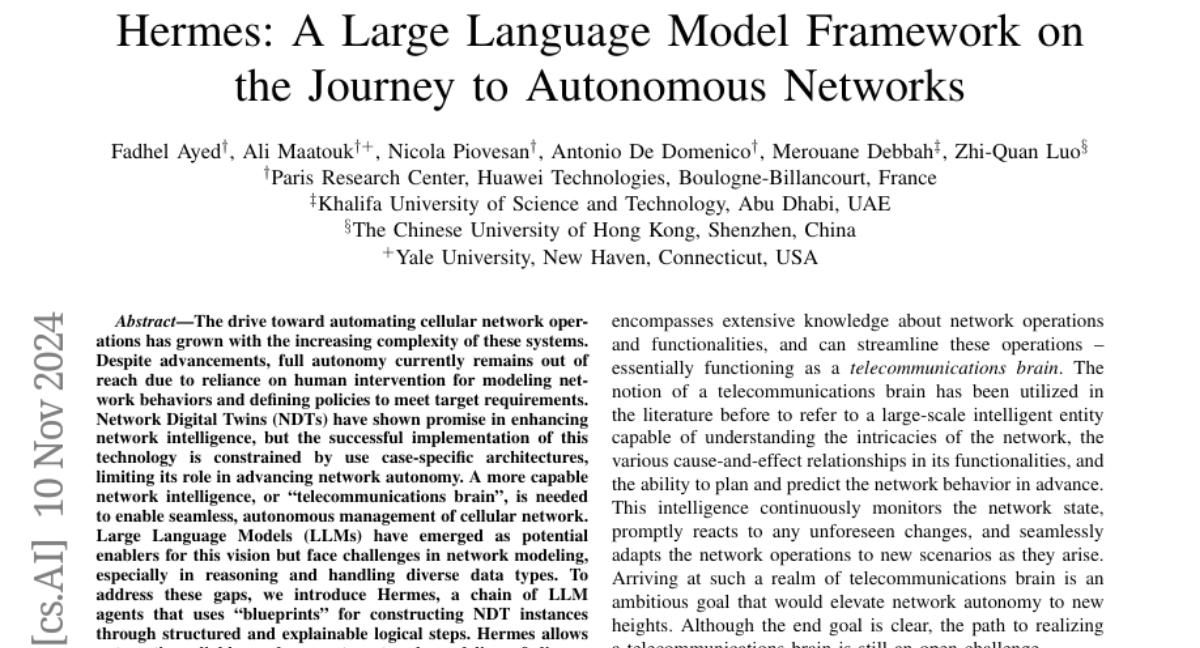Hermes: A Large Language Model Framework on the Journey to Autonomous Networks
Fadhel Ayed, Ali Maatouk, Nicola Piovesan, Antonio De Domenico, Merouane Debbah, Zhi-Quan Luo
2024-11-15

Summary
This paper discusses Hermes, a new framework that uses large language models (LLMs) to help automate and improve the management of cellular networks.
What's the problem?
As cellular networks become more complex, fully automating their operations is challenging because current systems still rely on humans to model network behaviors and set rules. Existing technologies like Network Digital Twins (NDTs) show promise but are limited by their specific designs, preventing them from being widely used for network autonomy.
What's the solution?
The authors introduce Hermes, which consists of a series of LLM agents that create structured plans, or 'blueprints,' for managing networks. These blueprints guide the creation of NDTs and help in accurately modeling network behavior. Hermes can automatically analyze policies and adapt to various network scenarios without needing constant human input, making it more efficient and reliable than previous methods.
Why it matters?
This research is significant because it represents a major step toward creating fully autonomous cellular networks. By improving how networks are managed and modeled, Hermes could lead to more efficient telecommunications systems that require less human intervention, ultimately enhancing connectivity and service quality for users.
Abstract
The drive toward automating cellular network operations has grown with the increasing complexity of these systems. Despite advancements, full autonomy currently remains out of reach due to reliance on human intervention for modeling network behaviors and defining policies to meet target requirements. Network Digital Twins (NDTs) have shown promise in enhancing network intelligence, but the successful implementation of this technology is constrained by use case-specific architectures, limiting its role in advancing network autonomy. A more capable network intelligence, or "telecommunications brain", is needed to enable seamless, autonomous management of cellular network. Large Language Models (LLMs) have emerged as potential enablers for this vision but face challenges in network modeling, especially in reasoning and handling diverse data types. To address these gaps, we introduce Hermes, a chain of LLM agents that uses "blueprints" for constructing NDT instances through structured and explainable logical steps. Hermes allows automatic, reliable, and accurate network modeling of diverse use cases and configurations, thus marking progress toward fully autonomous network operations.